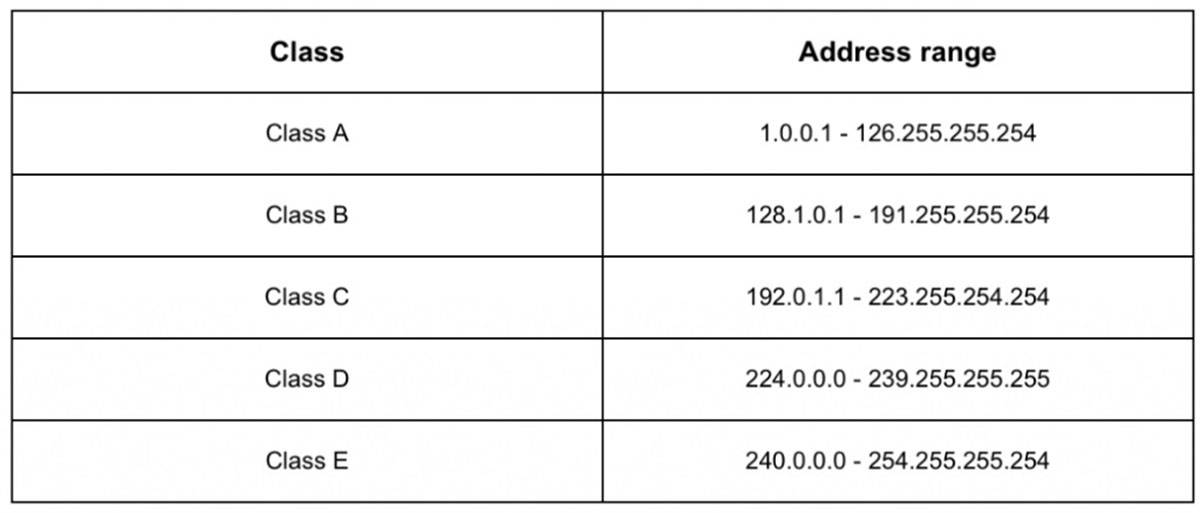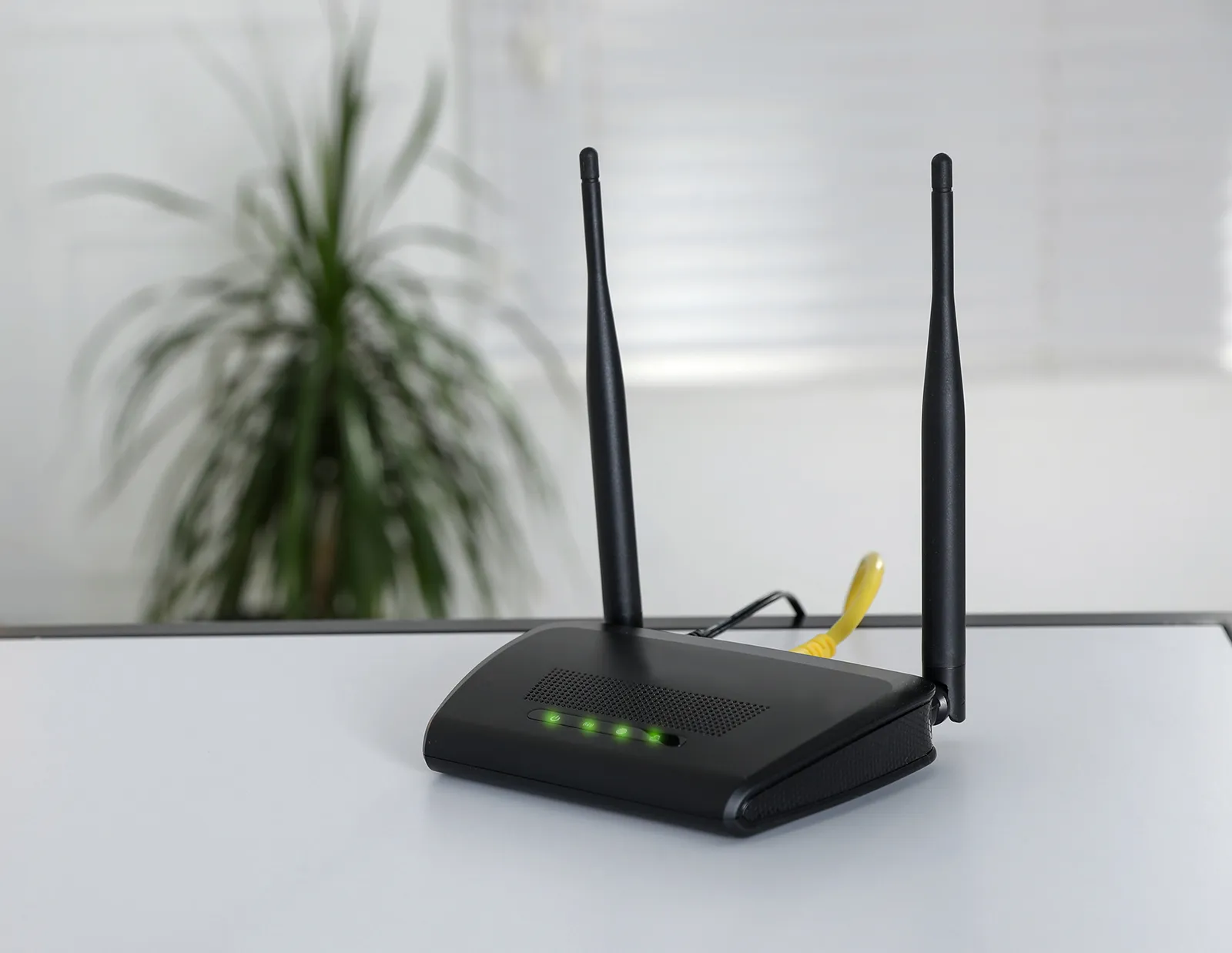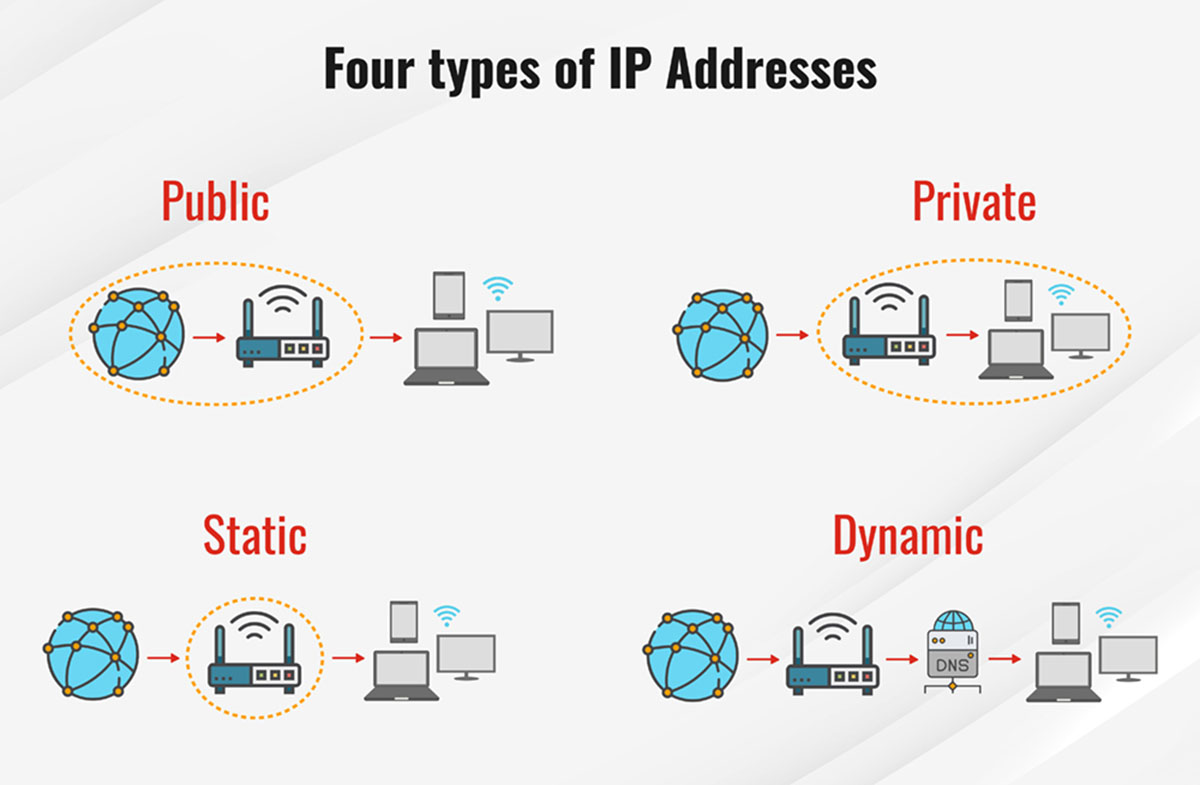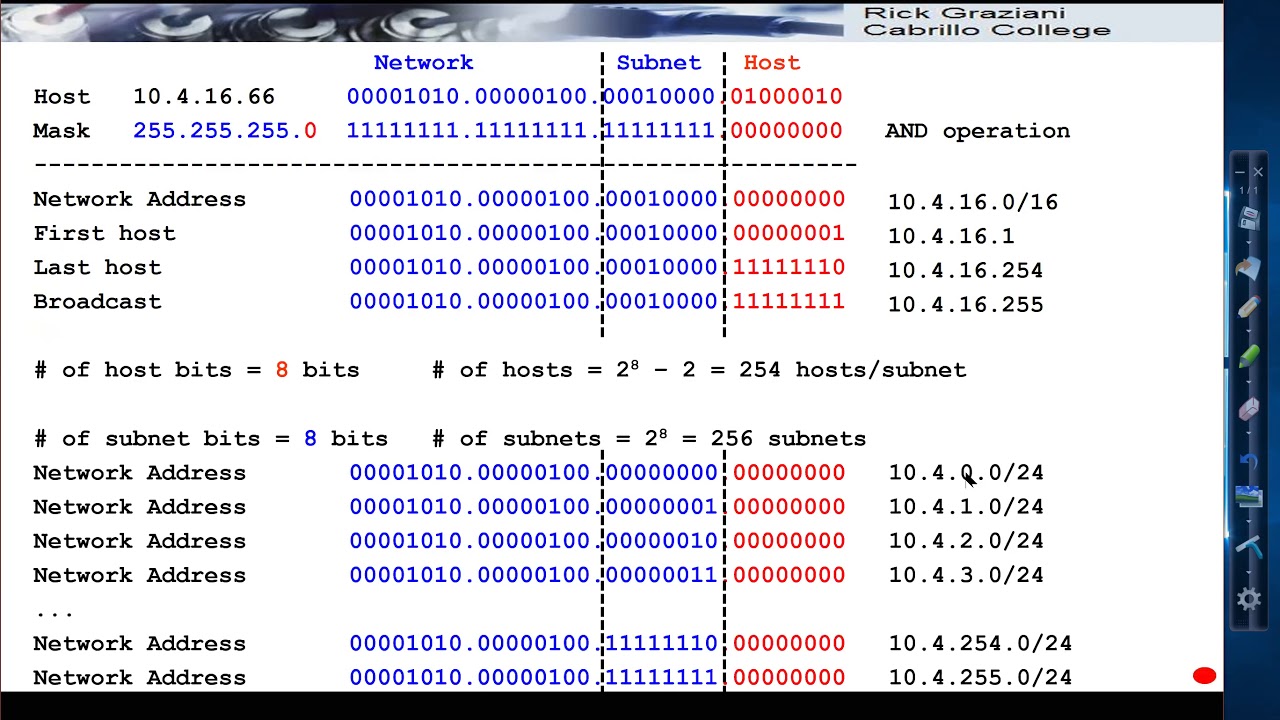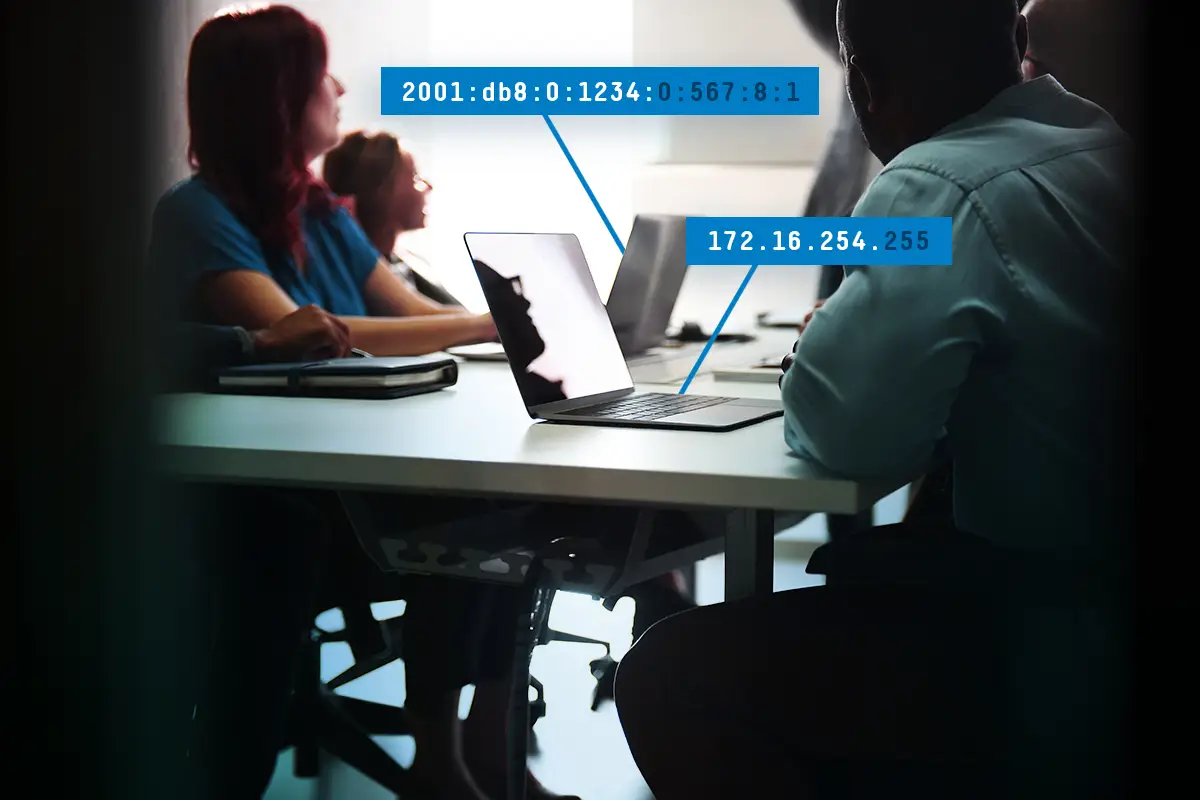Introduction
An IP address is a unique identifier assigned to every device connected to a network. It allows devices to communicate with each other across the internet or a local network. IP addresses are divided into different classes, namely Class A, Class B, Class C, Class D, and Class E. Each class has its own range of addresses and is used for specific purposes.
In this article, we will focus on Class C IP addresses. Class C addresses are commonly used in small to medium-sized networks as they provide a sufficient number of host addresses while allowing for efficient subnetting. Understanding the characteristics and identification of Class C IP addresses is essential for network administrators and IT professionals.
Class C IP addresses are distinguished by certain characteristics that differentiate them from other classes. By learning how to identify and work with Class C IP addresses, network administrators can effectively manage and troubleshoot network connectivity issues.
In the following sections, we will delve deeper into the concept of IP addresses, discuss the different IP address classes, explore the characteristics of Class C addresses, and provide examples of Class C IP addresses in practice. Let’s expand our knowledge of Class C IP addresses and their significance in networking.
Class C IP Address
A Class C IP address is a specific type of IP address that falls within the Class C range of addresses. Class C addresses are commonly used for small to medium-sized networks and provide a larger number of host addresses compared to Class A and Class B addresses.
Class C addresses are characterized by their network portion, which comprises the first three octets of the IP address, and their host portion, which is represented by the final octet. The network portion remains the same for all devices within a network, while the host portion varies for each individual device.
One distinguishing feature of Class C IP addresses is the subnet mask. The subnet mask for Class C addresses is 255.255.255.0, which means that the network portion of the IP address remains constant, while the host portion can have values ranging from 1 to 254.
Class C addresses offer the advantage of subnetting, which allows network administrators to divide a larger network into smaller subnetworks for better efficiency. This helps in organizing and managing the network resources effectively.
Additionally, Class C addresses also provide the opportunity for private network addressing. Private addresses within the Class C range are reserved for internal networks and are not publicly routable on the internet. This allows organizations to maintain their private network infrastructure without exposing it to the public.
In summary, Class C IP addresses are commonly used in small to medium-sized networks and provide a larger number of host addresses compared to other classes. They are characterized by a subnet mask of 255.255.255.0 and allow for efficient subnetting and private network addressing. In the next section, we will dive deeper into the concept of IP addresses to better understand their structure and purpose.
What is an IP Address?
An IP address, short for Internet Protocol address, is a unique numerical identifier that is assigned to each device connected to a network. It serves as a means of identification and allows devices to communicate with each other over the internet or a local network.
The structure of an IP address consists of four sets of numbers, separated by periods, such as 192.168.0.1. Each set can contain numbers ranging from 0 to 255. This format is referred to as IPv4 (Internet Protocol version 4) and is the most widely used format for IP addresses.
The primary purpose of an IP address is twofold: to identify the network to which a device belongs and to identify the specific device within that network. The network portion of the IP address remains constant for all devices within the same network, while the host portion varies for each individual device.
IP addresses are essential for establishing connections and transferring data across networks. When a device wants to send data to another device, it needs to know the recipient’s IP address to establish a connection. The IP address acts as the destination address, ensuring that the data reaches the intended device.
There are different classes of IP addresses, each serving a specific purpose. The commonly used classes are Class A, Class B, Class C, Class D, and Class E. Class A, Class B, and Class C are the most widely used classes and are segmented based on the number of networks and host addresses they can accommodate.
In recent years, the world has seen a transition to IPv6 (Internet Protocol version 6) due to the exhaustion of available IPv4 addresses. IPv6 uses a different addressing scheme that allows for a significantly larger number of unique addresses, ensuring the continued growth of the internet.
In summary, an IP address is a unique identifier assigned to devices connected to a network. It allows devices to communicate with each other over the internet or a local network by providing a means of identification. Understanding the structure and purpose of IP addresses is crucial for network administrators and IT professionals. Next, we will explore the different classes of IP addresses in more detail.
Understanding IP Address Classes
IP addresses are divided into different classes, namely Class A, Class B, Class C, Class D, and Class E. Each class is identified by the range of network addresses it can accommodate and the number of host addresses it can assign within those networks.
Here is an overview of the different IP address classes:
- Class A: Class A addresses have a leading network portion and a trailing host portion. The first octet represents the network address, while the remaining three octets are used for host addresses. This class is designed for large networks, as it can accommodate up to 16 million host addresses.
- Class B: Class B addresses have two leading network address octets and two trailing host address octets. This class is suitable for medium-sized networks, as it can accommodate up to 65,536 host addresses. Class B addresses provide a balance between network size and number of hosts.
- Class C: Class C addresses have three leading network address octets and one trailing host address octet. This class is commonly used for small to medium-sized networks, as it can accommodate up to 254 host addresses. Class C addresses provide a smaller network size but a larger number of hosts compared to Class A and Class B addresses.
- Class D: Class D addresses are reserved for multicast addresses, which are used for one-to-many communication. They are not typically assigned to individual devices or networks.
- Class E: Class E addresses are reserved for experimental use and are not used in practical networking scenarios.
Each class has a specific range of network addresses and host addresses associated with it. This allows network administrators to determine the appropriate IP address range for their network size and requirements.
It’s important to note that with the increasing use of subnetting, the strict boundaries between IP address classes have become more flexible. Subnetting allows for the division of a network into smaller subnetworks, providing greater flexibility in assigning IP addresses and optimizing network resources.
In the next section, we will explore the specific characteristics of Class C IP addresses and how to identify them.
Characteristics of Class C IP Address
Class C IP addresses have specific characteristics that differentiate them from other IP address classes. These characteristics play a crucial role in network administration and management. Let’s explore the key characteristics of Class C IP addresses:
- Subnet Mask: Class C addresses have a subnet mask of 255.255.255.0, indicating that the first three octets represent the network address, while the fourth octet represents the host address. This allows for 256 possible network addresses and a maximum of 254 host addresses within each network.
- Network Size: Class C addresses are typically used in small to medium-sized networks. With a maximum of 254 host addresses, Class C networks are suitable for organizations with fewer devices and a smaller number of subnets.
- Private Network Addressing: Class C addresses have a range of private IP addresses reserved for internal network use. The most commonly used private IP addresses in Class C are in the range of 192.168.0.0 to 192.168.255.255. These addresses are not publicly routable on the internet, providing organizations with a secure and private internal network infrastructure.
- Efficient Subnetting: Class C addresses are ideal for subnetting due to their larger number of host addresses per network. Subnetting allows network administrators to divide a Class C network into smaller subnetworks, improving network efficiency and management. By dividing a Class C network into subnets, organizations can allocate IP addresses more effectively and control network traffic flow.
- Suitable for Small to Medium-sized Businesses: Class C addresses are commonly used by small to medium-sized businesses, home networks, and small office setups. These businesses typically require a moderate number of host addresses and benefit from the flexibility and scalability provided by Class C IP addresses.
Understanding the characteristics of Class C IP addresses is crucial for network administrators and IT professionals. It allows them to effectively manage and optimize their network infrastructure, allocate IP addresses efficiently, and ensure smooth communication among devices.
In the next section, we will learn how to identify whether an IP address falls into the Class C range.
How to Identify a Class C IP Address
Identifying whether an IP address belongs to the Class C range is relatively straightforward. By examining the IP address itself and understanding the structure of Class C addresses, you can determine whether it falls within this class. Here are the steps to identify a Class C IP address:
- Step 1: Look at the first octet: In a Class C IP address, the first octet ranges from 192 to 223. If the first octet of the IP address falls within this range, there is a high probability that it belongs to the Class C class.
- Step 2: Confirm subnet mask: Class C addresses have a subnet mask of 255.255.255.0. This mask indicates that the first three octets represent the network number, while the final octet represents the host number. To determine if it is a Class C IP address, check whether the subnet mask is set to 255.255.255.0.
- Step 3: Verify the remaining octets: The remaining three octets of a Class C IP address can have values ranging from 0 to 255. By examining the second, third, and fourth octets, ensure that they fall within this range. If all three octets fall within the range of 0 to 255, it is likely a Class C IP address.
Remember that these steps provide a general guideline for identifying Class C IP addresses. It is essential to consider other factors such as subnetting and private address ranges to ensure accurate classification.
It’s worth noting that with the rise of CIDR (Classless Inter-Domain Routing), the traditional strict class boundaries have become more flexible. CIDR allows for the allocation of IP addresses based on variable-length subnet masks, providing greater flexibility and efficiency in address allocation.
By understanding the structure and characteristics of Class C IP addresses and applying the identification steps, network administrators and IT professionals can accurately determine the class of an IP address and effectively manage their network infrastructure.
In the next section, we will provide examples of Class C IP addresses to further illustrate their usage in real-world scenarios.
Examples of Class C IP Addresses
Class C IP addresses are commonly used in small to medium-sized networks, including home networks, small businesses, and office setups. They provide a sufficient number of host addresses and allow for efficient subnetting. Here are a few examples of Class C IP addresses:
- Example 1: 192.168.0.1 – This is a private IP address commonly used in home networks or small office setups. It falls within the Class C range and has a subnet mask of 255.255.255.0. The first three octets form the network address (192.168.0) and the last octet represents the host address (1).
- Example 2: 192.168.10.100 – Another private IP address within the Class C range, this address is often found in small business networks. Similar to the previous example, the first three octets (192.168.10) make up the network address, while the last octet (100) signifies the host address.
- Example 3: 203.0.113.50 – While Class C addresses are commonly used for private networks, they can also be used for public networks. In this example, 203.0.113 represents the network address, and 50 represents the host address. Public Class C IP addresses can be assigned to websites, servers, or other publicly accessible devices.
- Example 4: 198.162.1.25 – Another example of a Class C IP address, this address demonstrates that the network address (198.162.1) is consistent across devices within the same network, while the host address (25) can vary for each device.
- Example 5: 192.168.100.254 – This Class C IP address is near the upper limit of the allowable host addresses (254). It can be found in networks requiring a large number of devices or subnets, such as small offices with multiple departments or networks with numerous IoT devices.
These examples illustrate how Class C IP addresses are used in various network setups. They highlight the flexibility and scalability provided by Class C addresses, making them suitable for a wide range of network sizes and requirements.
Remember that the subnet mask and octet values determine whether an IP address falls into the Class C range. By identifying Class C IP addresses, network administrators can effectively manage and troubleshoot network connectivity issues within their small to medium-sized networks.
In the final section, we will summarize the key points discussed in this article and emphasize the significance of understanding Class C IP addresses in network administration.
Conclusion
In this article, we have explored the concept of Class C IP addresses and their significance in network administration. Class C addresses are commonly used in small to medium-sized networks, offering a larger number of host addresses compared to Class A and Class B addresses.
We began by understanding IP addresses and their role as unique identifiers for devices connected to a network. IP addresses are divided into different classes, and Class C addresses are characterized by a subnet mask of 255.255.255.0 and a range of private addresses for internal network use.
We learned how to identify Class C IP addresses by examining the first octet, confirming the subnet mask, and verifying the range of the remaining octets. By following these steps, network administrators can accurately classify IP addresses within the Class C range.
We also explored the characteristics of Class C addresses, including their network size, efficient subnetting capabilities, and suitability for small to medium-sized businesses. Class C addresses allow for effective network management, allocation of IP addresses, and control of network traffic flow.
Furthermore, we provided examples of Class C IP addresses to exemplify their usage in real-world scenarios. These examples highlighted the versatility and scalability of Class C addresses in various network setups, whether private or public.
In summary, understanding Class C IP addresses is essential for network administrators and IT professionals. It enables them to effectively manage and troubleshoot networks, allocate IP addresses efficiently, and ensure smooth communication among devices.
By grasping the fundamental concepts and characteristics of Class C IP addresses, network administrators can optimize their network infrastructure, enhance security, and improve overall network performance. Keeping up-to-date with IP addressing standards and best practices will continue to be crucial as internet connectivity evolves.







